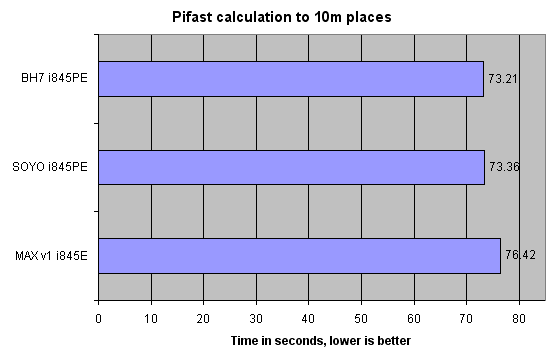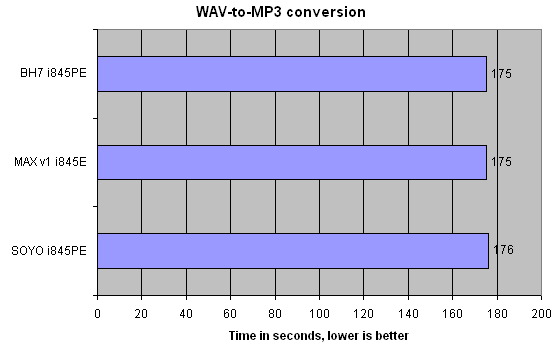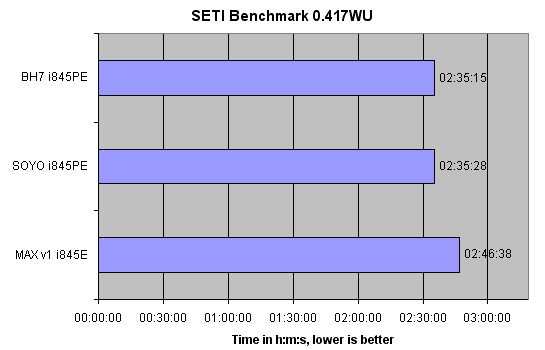Benchmarks I
Please remember that the comparison ABIT IT7-MAX v1 is running system RAM at the officially supported DDR266 speeds. All three motherboards support the 3.06GHz's Hyper-Threading function.
Running Pifast v41 first. It simply calculates the constant Pi to the desired number of places. 10 million is chosen for this test. If you want to run it for yourself, click here for the benchmark standings and download link. Just unzip and click on the .bat file.

Similar performances from the two i845PE boards, no surprise there. The i845E lags behind due to slower system memory
Next we'll turn our attention to MP3 encoding. We're benchmarking by encoding a 610MB custom WAV file (U2's Pop album, incidentally) into 192kb/s MP3 using the LAME 3.91 encoder and Razor-Lame 1.15 front-end.

Very little in this benchmark. There's only so much that Hyper-Threading and faster memory speed can do with MP3 encoding. Faster clock speed is the all-important factor here.
But one activity that readily employs the benefits of HT tech. and faster memory speeds is DVD-to-Div encoding. Using the updated DivX 5.03 Pro CODEC in conjunction with Virtual Dub 1.51 (P4 optimised), we're setting it to encode the first VOB from American History X (22 minutes 21 seconds). 720x384 resolution with cropped black borders, a 2000 kb/s bit-rate is used on a single-pass basis. Quality / slowest settings are used.

The BH7 took 22:16, the SOYO took 22:19 and the MAX i845E took 22:58 to complete the VOB. As the DVD runs at 25 FPS, the graph shows the relative FPS rates. Hyper-Threading really does help here, as does faster memory speeds. Running the BH7 without HT employed resulted in an encoding time of 23:28 compared to 22:16 with HT; 72 seconds slower. The FPS may seem slow, but a very high-quality setting is used on a single pass.
Let's see how they fare in our SETI benchmark. A 0.417WU makes it an average unit. Time is in hours, minutes and seconds.

The trend continues.









